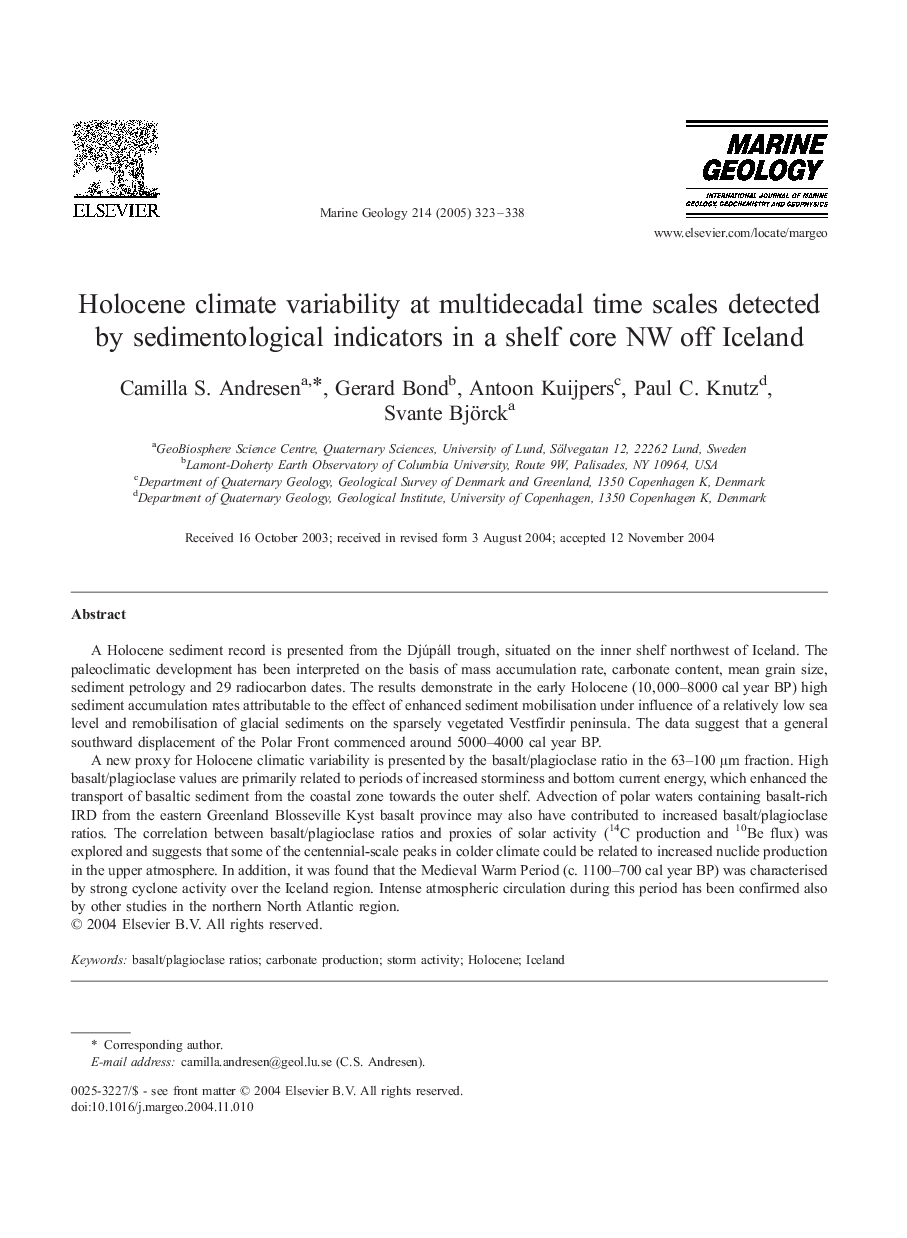| Article ID | Journal | Published Year | Pages | File Type |
|---|---|---|---|---|
| 9532765 | Marine Geology | 2005 | 16 Pages |
Abstract
A new proxy for Holocene climatic variability is presented by the basalt/plagioclase ratio in the 63-100 μm fraction. High basalt/plagioclase values are primarily related to periods of increased storminess and bottom current energy, which enhanced the transport of basaltic sediment from the coastal zone towards the outer shelf. Advection of polar waters containing basalt-rich IRD from the eastern Greenland Blosseville Kyst basalt province may also have contributed to increased basalt/plagioclase ratios. The correlation between basalt/plagioclase ratios and proxies of solar activity (14C production and 10Be flux) was explored and suggests that some of the centennial-scale peaks in colder climate could be related to increased nuclide production in the upper atmosphere. In addition, it was found that the Medieval Warm Period (c. 1100-700 cal year BP) was characterised by strong cyclone activity over the Iceland region. Intense atmospheric circulation during this period has been confirmed also by other studies in the northern North Atlantic region.
Related Topics
Physical Sciences and Engineering
Earth and Planetary Sciences
Geochemistry and Petrology
Authors
Camilla S. Andresen, Gerard Bond, Antoon Kuijpers, Paul C. Knutz, Svante Björck,
